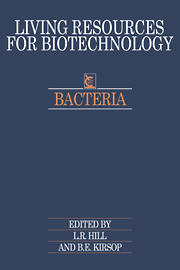Book contents
Series introduction
Published online by Cambridge University Press: 04 August 2010
Summary
The rapid advances taking place in biotechnology have introduced large numbers of scientists and engineers to the need for handling microorganisms, often for the first time. Questions are frequently raised concerning sources of cultures, location of strains with particular properties, requirements for handling the cultures, preservation and identification methods, regulations for shipping, or the deposit of strains for patent purposes. For those in industry, research institutes or universities with little experience in these areas, resolving such difficulties may seem overwhelming. The purpose of the World Federation for Culture Collections' (WFCC) series, Living Resources for Biotechnology, is to provide answers to these questions.
Living Resources for Biotechnology is a series of practical books that provide primary data and guides to sources for further information on matters relating to the location and use of different kinds of biological material of interest to biotechnologists. A deliberate decision was taken to produce separate volumes for each group of microorganism rather than a combined compendium, since our enquiries suggested that inexpensive specialised books would be of more general value than a larger volume containing information irrelevant to workers with interests in one particular type of organism. As a result each volume contains specialised information together with material on general matters (information centres, patents, consumer services, the international coordination of culture collection activities) that is common to each.
The WFCC is an international organisation concerned with the establishment of microbial resource centres and the promotion of their activities.
- Type
- Chapter
- Information
- Bacteria , pp. xi - xiiPublisher: Cambridge University PressPrint publication year: 1991



